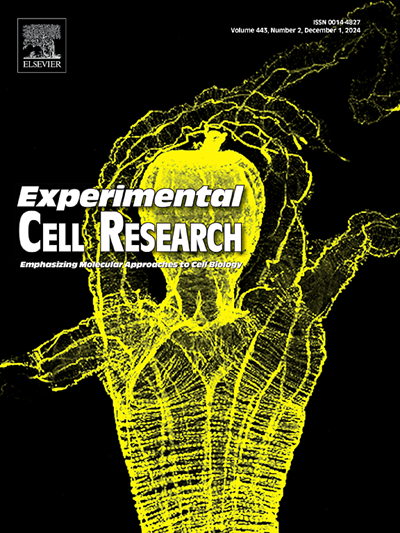脂滴-线粒体接触的丧失可以保护细胞免受乙醇引起的心脏毒性。
IF 3.3
3区 生物学
Q3 CELL BIOLOGY
引用次数: 0
摘要
乙醇诱导的心脏毒性(EIC)与脂质代谢紊乱密切相关。脂滴-线粒体接触(LD-Mito接触)是脂质代谢的重要节点。然而,LD-Mito联系人在EIC中的作用尚未得到澄清。在本研究中,EtOH暴露诱导心肌细胞中LD的显著积累,并伴有脂肪生成和脂肪分解的紊乱。在EtOH处理后,我们还观察到LD- mito接触量大幅减少,捆绑蛋白PLIN5 (Perilipin 5)下调,LD到线粒体的脂肪酸(FA)通量减少。过表达全长PLIN5,而不是其截短形式(PLIN5Δ),逆转了LD-Mito接触的减少并恢复了FA通量。为了排除PLIN5多种功能的影响,并研究LD-Mito触点在EIC中的具体作用,合成了LD-Mito- linker。通过合成连接物将LD连接到线粒体上可以恢复etoh处理心肌细胞的LD- mito接触和FA通量。通过测量炎症和心肌细胞死亡来表明EIC的脂肪毒性。我们的研究结果表明,过表达PLIN5Δ可改善etoh诱导的心肌细胞死亡和炎症,而通过合成连接体恢复LD-Mito接触可加重细胞凋亡、炎症反应、氧化应激和线粒体膜电位去极化。这些发现表明,LD-Mito接触体的缺失和FA通量的阻断可能是对EtOH暴露的细胞适应性反应,因此靶向LD-Mito接触体可能是对抗EIC的潜在治疗策略。本文章由计算机程序翻译,如有差异,请以英文原文为准。

Loss of lipid droplet-mitochondria contacts confers protection against ethanol-induced cardiotoxicity
EtOH (Ethanol)-induced cardiotoxicity (EIC) is intimately associated with perturbed lipid metabolism. Lipid droplet-Mitochondria contacts (LD-Mito contacts) are important nodes in lipid metabolism. However, the roles of LD-Mito contacts in EIC have yet to be clarified. In the present study, EtOH exposure induced a significant build-up of LD in cardiomyocytes accompanied by the disturbances in lipogenesis and lipolysis. Upon EtOH treatment, we also observed a substantial decrease in LD-Mito contacts, downregulation of the tethering protein PLIN5 (Perilipin 5), and reduced fatty acid (FA) flux from LD to mitochondria. Overexpression of full-length PLIN5, but not its truncated form (PLIN5Δ), reversed the reduction in LD-Mito contacts and restored FA flux. A synthetic LD-Mito-Linker was generated to exclude the influence of PLIN5's versatile functions and investigate the specific role of LD-Mito contacts in EIC. Tethering LD to mitochondria by the synthetic linker restored the LD-Mito contacts and FA flux in EtOH-treated cardiomyocytes. Inflammation and cardiomyocyte death were measured to indicate lipotoxicity in EIC. Our results demonstrated that overexpression of PLIN5Δ ameliorated EtOH-induced cardiomyocytes death and inflammation whereas restoration of LD-Mito contacts by the synthetic linker aggravated apoptosis, inflammatory response, oxidative stress and Mitochondrial membrane potential depolarization. These findings indicated that loss of LD-Mito contacts and the blocked FA flux may act as a cellular adaptive response to EtOH exposure, thus targeting LD-Mito contacts may serve as a potential therapeutic strategy to combat EIC.
求助全文
通过发布文献求助,成功后即可免费获取论文全文。
去求助
来源期刊

Experimental cell research
医学-细胞生物学
CiteScore
7.20
自引率
0.00%
发文量
295
审稿时长
30 days
期刊介绍:
Our scope includes but is not limited to areas such as: Chromosome biology; Chromatin and epigenetics; DNA repair; Gene regulation; Nuclear import-export; RNA processing; Non-coding RNAs; Organelle biology; The cytoskeleton; Intracellular trafficking; Cell-cell and cell-matrix interactions; Cell motility and migration; Cell proliferation; Cellular differentiation; Signal transduction; Programmed cell death.
 求助内容:
求助内容: 应助结果提醒方式:
应助结果提醒方式:


